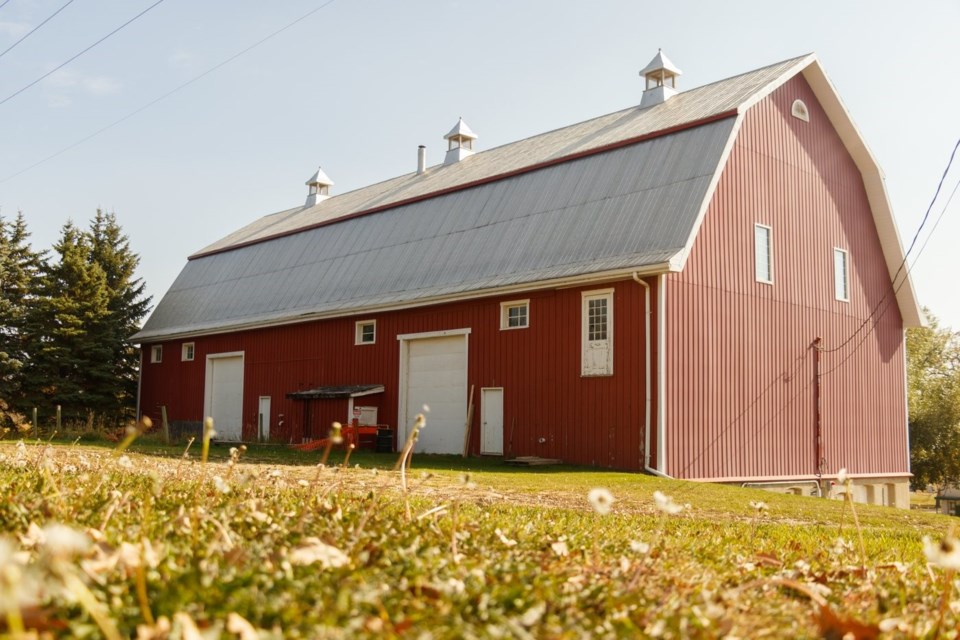Manitoba Historical Society President Gordon Goldsborough said he is disappointed to see Red Barn 13 will be torn down, given its historical significance in Manitoba.
“Barns are disappearing, so it seems to me the barn as a principal will be something that people within a generation will have little or no awareness of,” Goldsborough said. “We think it’s important that you have a few reminders of the early days of agriculture. It’s a good reminder of our roots. To remind us how much things have changed today.”
Goldsborough added he questions the rationale that demolition was the only possibility for the barn and why the building has not been designated a heritage site.
In an email statement, Agriculture and Agri-Food Canada senior media relations adviser Cameron Newbigging said Red Barn 13 no longer supports program needs at the Brandon Research and Development Centre and the structure is in too poor of condition for removal, relocation or reuse.
Public tender for the demolition of the building was posted Sept. 29 and closes Oct. 19.
Newbigging said the demolition of the site will take place in four parts — starting with the removal of hazardous material removal, followed by fuel monitoring relocation, deconstruction and reinstatement in turn. Hazardous material abatement is expected to begin in mid-November and will be followed by demolition.
When considering demolition projects, due diligence is taken, including conducting an environmental evaluation, such as for species at risk, undertaking hazardous material abatement and contamination remediation if necessary, and consulting with the Federal Heritage Building Review Office for heritage designations.
Newbigging said the building’s exterior has undergone many changes throughout its life, including the replacement of most of the original external features and the removal of the original silo in the area.
Access to Red Barn 13 is intermittent and limited to maintenance tasks and is not used by the Research Centre.
Red Barn 13 was reviewed and assessed by the Government of Canada’s Federal Heritage Review Office. At the time, it was not designated as a heritage building and it was concluded Red Barn 13 was not of historic value.
“The federal government has made up their mind, apparently, and I don’t know if any rational arguments are going to change that,” Goldsborough said.
He added he questions how thorough the investigations and evaluations of the site were and wants transparency in how the decision was reached. Goldsborough noted the results of the evaluation have yet to be released to the public, including making clear the cost of maintaining the barn.
“To my mind, there should be public transparency in all this. That they should justify the decision from a basis that this was a rigorous evaluation that was done and it has concluded that there is nothing to be done,” Goldsborough said. “Show us that.”
The Brandon Research and Development Centre was established in 1886, and Red Barn 13 was constructed in 1917. It was used as a cattle barn until 1977 and was later repurposed as a carpenter shop and plant science work area.
Red Barn 13 is located at one of the original five experimental farms established in Canada starting in the 19th century. At the time, the government of Canada was looking to establish agriculture across the country. The experimental farms aided local farmers in adapting crops, livestock and techniques used to the specific environments they lived in.
Farms were established in Saskatchewan, British Columbia, Nova Scotia and Ottawa. Brandon was the final farm established and the barn is as far as Goldsborough knows the only remaining building from the early days of the facility.
“It wasn’t built at the very, very beginning of the farm. All those original buildings are gone now. But, it is as far as we know, the oldest building still standing,” Goldsborough said.
Driving into the farm today, visitors can see Red Barn 13 located beside the main building, serving as a conspicuous part of the landscape.
As a world-class research site for the agricultural industry, Goldsborough said, there is an obligation to honour the past, and that tangible way to do that is to preserve Red Barn 13.
He added the once iconic barns are quickly disappearing from the landscape across the province.
“People, I think, assume that there are barns all over the place, and of course that was once at one time true,” Goldsborough said. “But the days of the family mixed farm are dwindling and along with them the barns because they are no longer seen as a necessity for modern farm operations.”
The Manitoba Historical Society conducted a survey about five years ago of barns that had been standing in the early 1980s based on a survey done in Western Canada, to see how many were still standing. It was estimated about one-third of them had been torn down.
Goldsborough hopes the general public can voice what they want to see done with the landmark and help find a solution that satisfies everyone.
“There should be a full public process before the decision to tear it down is made,” he said. “I want to see the evidence. Governments should be transparent.”

